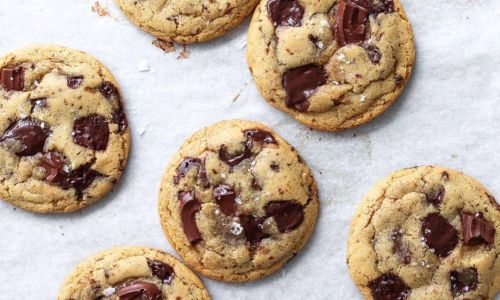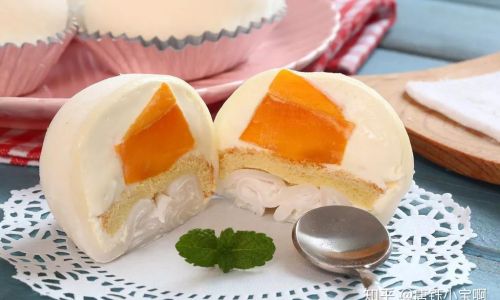Introduction
Baking cookies is a labor of love, but preserving their freshness, texture, and flavor requires equal attention to detail. Whether you’ve spent hours crafting delicate shortbread, chewy chocolate chip delights, or intricately decorated sugar cookies, improper storage can turn your hard work into a stale disappointment. This comprehensive guide explores the science behind cookie preservation, the best practices for different types of cookies, and creative solutions to extend their shelf life. From understanding the role of humidity and temperature to mastering advanced techniques like vacuum sealing and freeze-drying, you’ll learn how to keep your cookies as irresistible as the day they were baked.
Chapter 1: The Fundamentals of Cookie Preservation
1 Understanding Cookie Composition
Cookies vary widely in ingredients—butter, sugar, eggs, flour, leavening agents, and add-ins like chocolate chips or nuts—each contributing to their texture and moisture content. For example:
- Crispy Cookies (e.g., gingersnaps, biscotti): Low moisture, high sugar concentration.
- Chewy Cookies (e.g., oatmeal raisin, peanut butter): Higher moisture from ingredients like brown sugar or molasses.
- Soft Cookies (e.g., sugar cookies, snickerdoodles): Tender crumb due to fat content and minimal leavening.
The preservation method must align with the cookie’s inherent properties to prevent sogginess, staleness, or drying out.

2 The Enemies of Freshness
- Moisture: Accelerates staling and mold growth.
- Air: Oxidizes fats, leading to rancidity.
- Humidity: Causes softening in crispy cookies and hardening in soft ones.
- Temperature Fluctuations: Creates condensation, altering texture.
3 Storage Containers: The First Line of Defense
- Airtight Containers: Glass or plastic with tight-fitting lids. Opt for containers that minimize air pockets.
- Reusable Silicone Bags: Eco-friendly and airtight, ideal for small batches.
- Mason Jars: Aesthetic and functional; add a slice of bread to regulate moisture (see Chapter 3).
- Avoid: Cardboard boxes, plastic wrap alone, or damp containers.
Chapter 2: Storage Methods for Every Cookie Type
1 Crispy Cookies (e.g., Thin Mints, Tuiles)
- Room Temperature: Store in an airtight container at 65–70°F (18–21°C). Line the container with parchment paper to prevent sticking.
- Freezing: Place cookies in a single layer on a baking sheet; freeze until solid, then transfer to a freezer bag. Thaw at room temperature.
- Avoid: Humid environments; crispy cookies absorb moisture rapidly.
2 Chewy Cookies (e.g., Chocolate Chip, Molasses)
- Room Temperature: Use an airtight container with a slice of white bread to maintain softness. The bread releases moisture, which the cookies absorb. Replace the bread every 2 days.
- Refrigeration: Not ideal, as cold air dries out cookies. If necessary, wrap tightly in plastic before refrigerating.
- Freezing: Freeze dough balls instead of baked cookies. Bake directly from frozen for fresh-out-of-the-oven texture.
3 Soft and Delicate Cookies (e.g., Macarons, Spritz)
- Room Temperature: Store in a single layer to prevent crushing. Use a container lined with paper towels to absorb excess moisture.
- Refrigeration: Only for filled cookies (e.g., jam-filled linzer). Wrap individually in parchment paper.
- Freezing: Freeze unfilled cookies between layers of parchment. Thaw in the refrigerator to prevent condensation.
4 Decorated or Iced Cookies

- Royal Icing: Allow icing to dry completely (12–24 hours) before storing. Use a container with a tight lid to prevent humidity from softening the icing.
- Ganache or Cream Fillings: Refrigerate but bring to room temperature before serving to avoid condensation.
Chapter 3: Advanced Preservation Techniques
1 Vacuum Sealing
- Removes air, preventing oxidation and freezer burn. Ideal for long-term storage (up to 6 months).
- Tip: Freeze cookies first, then vacuum-seal to avoid crushing delicate textures.
2 Freeze-Drying
- A commercial method that removes moisture while preserving flavor and shape. Home freeze-dryers are expensive but effective for preserving batches.
3 Oxygen Absorbers
- Small packets placed in storage containers to inhibit spoilage. Safe for dry cookies like biscotti.
4 Humidity Control Packs
- Silica gel or clay-based desiccants absorb excess moisture. Replace every 1–2 months.
Chapter 4: Troubleshooting Common Issues
1 Stale Cookies
- Cause: Starch retrogradation (moisture migration from cookies to air).
- Fix: Revive crispy cookies by baking at 300°F (150°C) for 3–5 minutes. Soften chewy cookies with a damp paper towel in the microwave (10-second intervals).
2 Soggy Bottoms

- Cause: Condensation from improper cooling or storage.
- Prevention: Let cookies cool completely on a wire rack before storing. Use breathable containers like cardboard boxes lined with wax paper.
3 Rancid Flavor
- Cause: Oxidized fats from exposure to air or light.
- Prevention: Store in opaque containers and consume within 2 weeks. Freeze for longer shelf life.
Chapter 5: Creative Hacks for Cookie Longevity
1 The “Cookie Sandwich” Method
- Pair two cookies with a layer of frosting or chocolate. The filling acts as a moisture barrier.
2 Individual Wrapping
- Wrap cookies in parchment or wax paper before storing. Prevents odor absorption and cross-contamination.
3 Repurposing Stale Cookies
- Crumble stale cookies into pie crusts, ice cream toppings, or cheesecake bases.
Chapter 6: Shelf Life Guidelines
| Cookie Type | Room Temperature | Refrigerator | Freezer |
|---|---|---|---|
| Crispy | 1–2 weeks | 2–3 weeks | 3–6 months |
| Chewy | 3–5 days | 1 week | 2–3 months |
| Soft/Delicate | 2–3 days | 1 week | 1–2 months |
| Decorated | 1 week | 2 weeks | 3 months |
Note: Freezer life assumes proper packaging (airtight, vacuum-sealed, or double-wrapped).
Chapter 7: The Science Behind Staling
Cookie staling is a chemical process involving starch molecules and moisture. When cookies bake, starch granules absorb moisture and swell. Over time, these molecules recrystallize, pushing moisture outward and causing hardening. This process accelerates at room temperature but slows in the freezer.

Key Takeaways:
- Low-moisture cookies (crispy) stale slower than high-moisture ones (chewy).
- Sugar acts as a humectant, pulling moisture from the air—a benefit for soft cookies but a liability for crispy ones.
Chapter 8: Sustainable Storage Solutions
- Beeswax Wraps: Reusable alternatives to plastic wrap.
- Glass Jars with Silicone Lids: Durable and airtight.
- Repurposed Containers: Cleaned jars from sauces or candles make excellent cookie holders.
Conclusion
Preserving cookies is both an art and a science. By understanding your cookies’ unique needs and leveraging techniques like humidity control, vacuum sealing, and strategic freezing, you can enjoy fresh-baked flavor for months. Whether you’re a hobbyist baker or a professional, these methods ensure that every cookie you serve—whether days or weeks later—delights the senses. Experiment with containers, monitor shelf life, and never hesitate to repurpose stale batches into innovative treats. Happy baking—and even happier preserving!
Final Tip: Label containers with the baking date and cookie type. A small piece of tape with “Crispy – 10/25” or “Chewy – Frosted” prevents mystery snacks and ensures rotational consumption.
Word Count: 1,987






0 comments